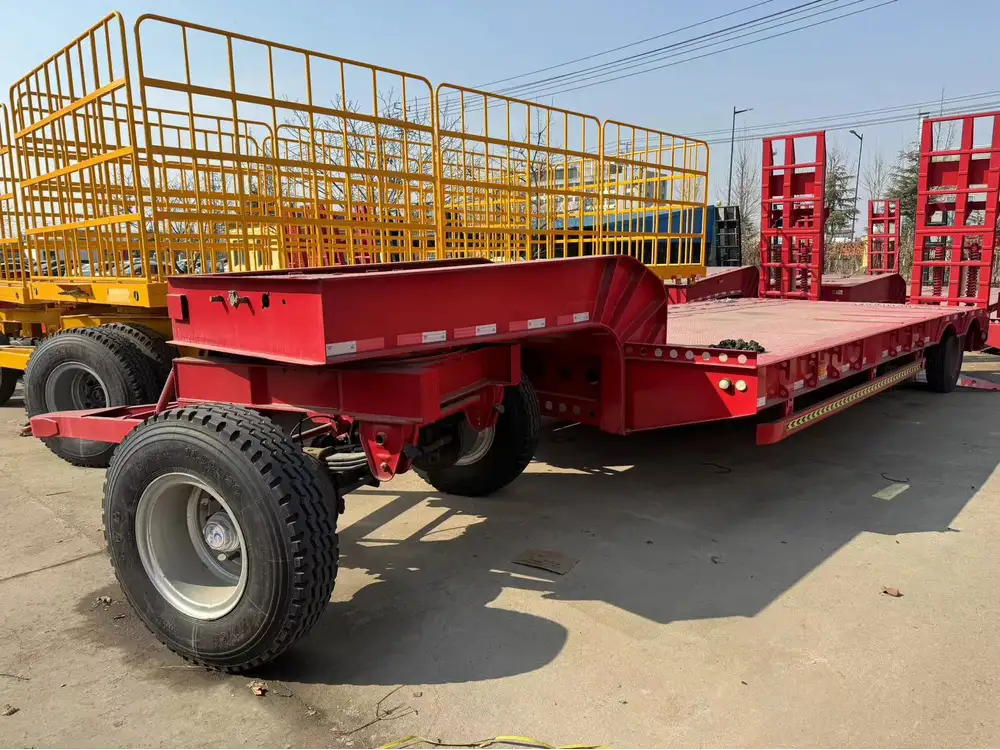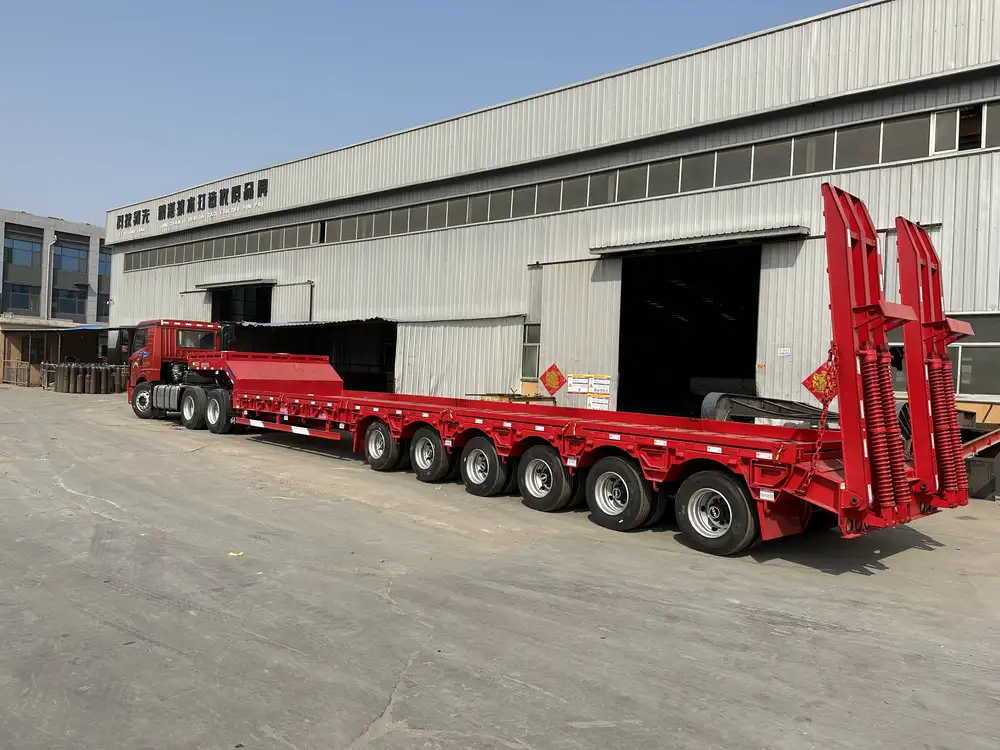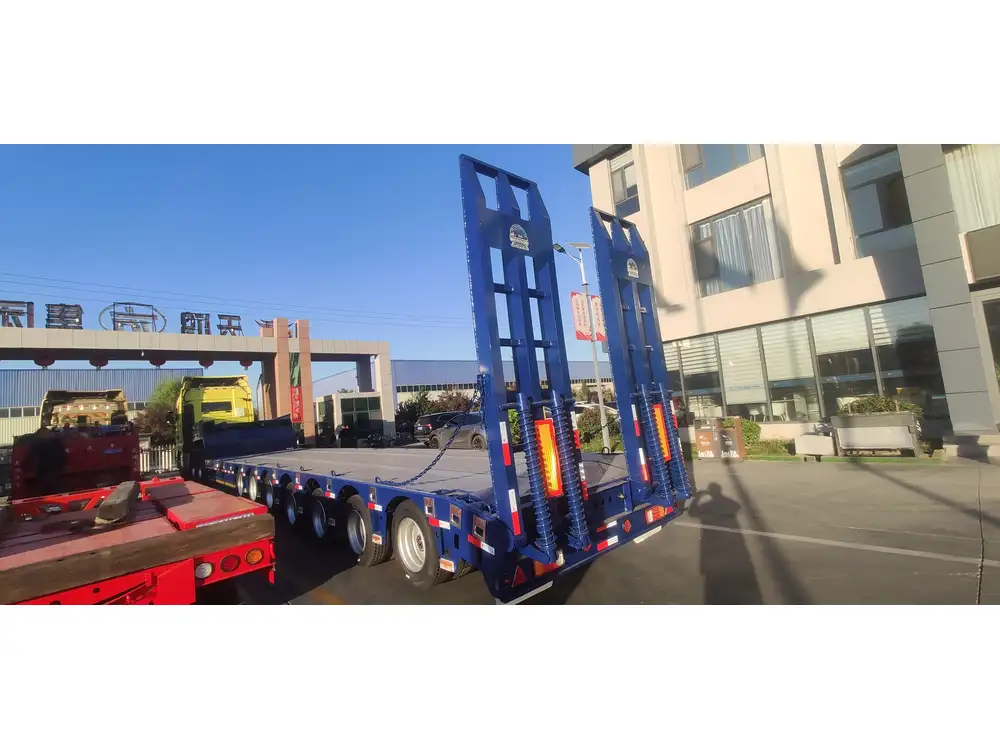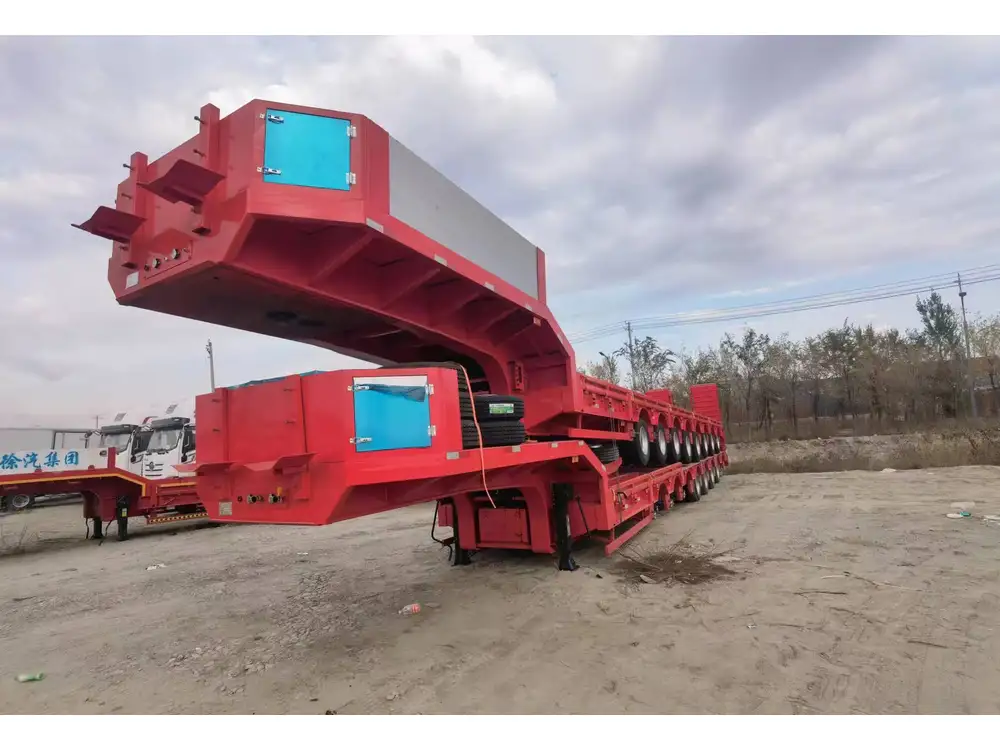In the ever-evolving landscape of transportation and logistics, the demand for specialized trailers has surged, particularly in regions like Mali. Among these, the low bed gooseneck trailer stands out as a vital asset for heavy-duty hauling. This article delves into the intricacies of low bed gooseneck trailers, their advantages, and why they are essential for businesses in Mali.
Understanding Low Bed Gooseneck Trailers
Low bed gooseneck trailers are designed to transport heavy and oversized loads. Their unique structure features a lowered deck that allows for a lower center of gravity, enhancing stability during transport. The gooseneck design connects the trailer to the towing vehicle, providing better maneuverability and weight distribution.
Key Features of Low Bed Gooseneck Trailers
- Low Deck Height: The primary advantage of low bed trailers is their low deck height, which facilitates the transportation of tall equipment without exceeding height restrictions.
- Gooseneck Coupling: This design allows for tighter turns and improved handling, making it ideal for navigating urban environments or construction sites.
- Robust Construction: Built to withstand heavy loads, these trailers are constructed from high-strength materials, ensuring durability and longevity.
- Versatile Load Capacity: Capable of carrying a wide range of equipment, from construction machinery to industrial equipment, low bed gooseneck trailers are versatile in their applications.

Why Choose a Low Bed Gooseneck Trailer?
Enhanced Stability and Safety
Transporting heavy loads can be risky, especially on uneven terrain. The low profile of gooseneck trailers lowers the center of gravity, significantly enhancing stability. This design minimizes the risk of tipping, ensuring safer transport of valuable equipment.
Increased Load Capacity
Low bed gooseneck trailers are engineered to handle substantial weight. With a typical load capacity ranging from 20,000 to 50,000 pounds, they are ideal for transporting heavy machinery, such as excavators, bulldozers, and other construction equipment.

Cost-Effectiveness
Investing in a low bed gooseneck trailer can lead to significant cost savings. Their ability to transport oversized loads without the need for additional permits or escorts reduces operational costs. Moreover, their durability means lower maintenance expenses over time.
Versatility Across Industries
From construction and agriculture to mining and logistics, low bed gooseneck trailers serve various industries. Their adaptability makes them a preferred choice for businesses looking to optimize their transportation capabilities.
The Market for Low Bed Gooseneck Trailers in Mali
Mali’s growing economy and infrastructure development projects have increased the demand for heavy-duty transportation solutions. As industries expand, the need for reliable and efficient trailers becomes paramount.

Key Industries Driving Demand
- Construction: With numerous infrastructure projects underway, construction companies require robust trailers to transport heavy machinery.
- Mining: The mining sector’s growth necessitates specialized trailers for transporting equipment and materials.
- Agriculture: Farmers and agricultural businesses benefit from low bed trailers for transporting large farming equipment.
Challenges in the Market
While the demand for low bed gooseneck trailers is on the rise, several challenges persist:
- Limited Availability: The market for specialized trailers in Mali is still developing, leading to limited options for buyers.
- Quality Concerns: Ensuring the quality and durability of trailers is crucial, as subpar products can lead to increased operational costs and safety risks.
Choosing the Right Low Bed Gooseneck Trailer
When selecting a low bed gooseneck trailer, several factors must be considered to ensure it meets your specific needs.

Load Requirements
Understanding the types of loads you will be transporting is essential. Consider the weight, dimensions, and nature of the equipment to choose a trailer with the appropriate load capacity.
Trailer Specifications
Evaluate the specifications of the trailer, including:
- Deck Length: Longer decks can accommodate larger equipment but may be less maneuverable.
- Axle Configuration: More axles can distribute weight more effectively, enhancing stability.
- Material Quality: Opt for trailers made from high-strength steel or aluminum for durability.
Manufacturer Reputation
Choosing a reputable manufacturer is crucial for ensuring quality and reliability. Companies like CarMax Vehicle are known for their commitment to producing high-quality trailers that meet industry standards.

Maintenance Tips for Low Bed Gooseneck Trailers
To maximize the lifespan and performance of your low bed gooseneck trailer, regular maintenance is essential. Here are some key maintenance tips:
Regular Inspections
Conduct routine inspections to identify any signs of wear and tear. Check the brakes, tires, and suspension systems to ensure they are in optimal condition.
Lubrication
Regularly lubricate moving parts, including the gooseneck coupling and axles, to prevent friction and wear.

Cleaning
Keep the trailer clean to prevent rust and corrosion. Regular washing, especially after transporting materials that may cause damage, is advisable.
Tire Maintenance
Monitor tire pressure and tread wear. Properly inflated tires enhance fuel efficiency and improve safety during transport.
Conclusion
Investing in a low bed gooseneck trailer is a strategic decision for businesses in Mali looking to enhance their transportation capabilities. With their robust construction, versatility, and safety features, these trailers are indispensable for transporting heavy and oversized loads. As the demand for efficient logistics solutions continues to grow, choosing the right trailer can significantly impact operational success.

FAQs
1. What is the typical load capacity of a low bed gooseneck trailer?
The load capacity typically ranges from 20,000 to 50,000 pounds, depending on the specific model and configuration.
2. How do I choose the right low bed gooseneck trailer for my needs?
Consider factors such as load requirements, trailer specifications, and the reputation of the manufacturer when making your selection.
3. What maintenance is required for low bed gooseneck trailers?
Regular inspections, lubrication of moving parts, cleaning, and tire maintenance are essential for optimal performance.
4. Why are low bed gooseneck trailers preferred for transporting heavy equipment?
Their low deck height enhances stability, while the gooseneck design allows for better maneuverability and weight distribution.













Reviews
There are no reviews yet.